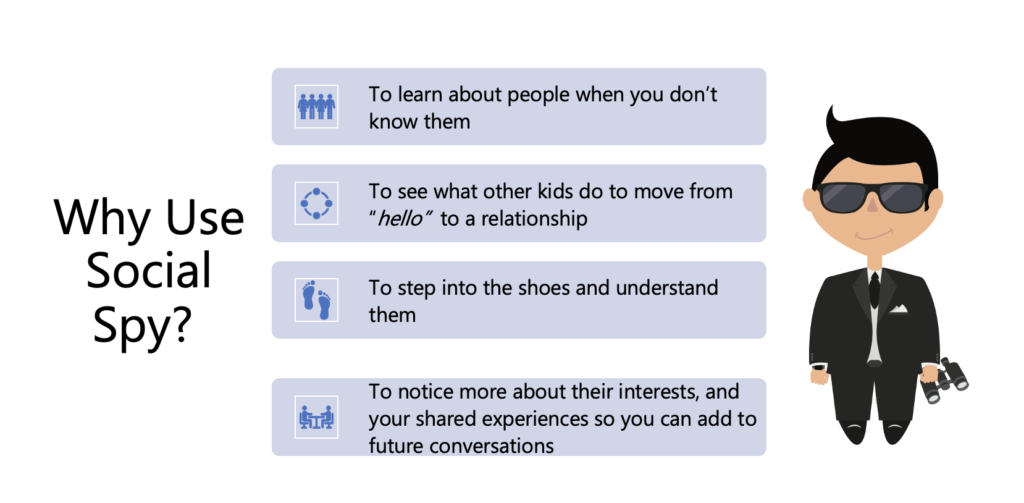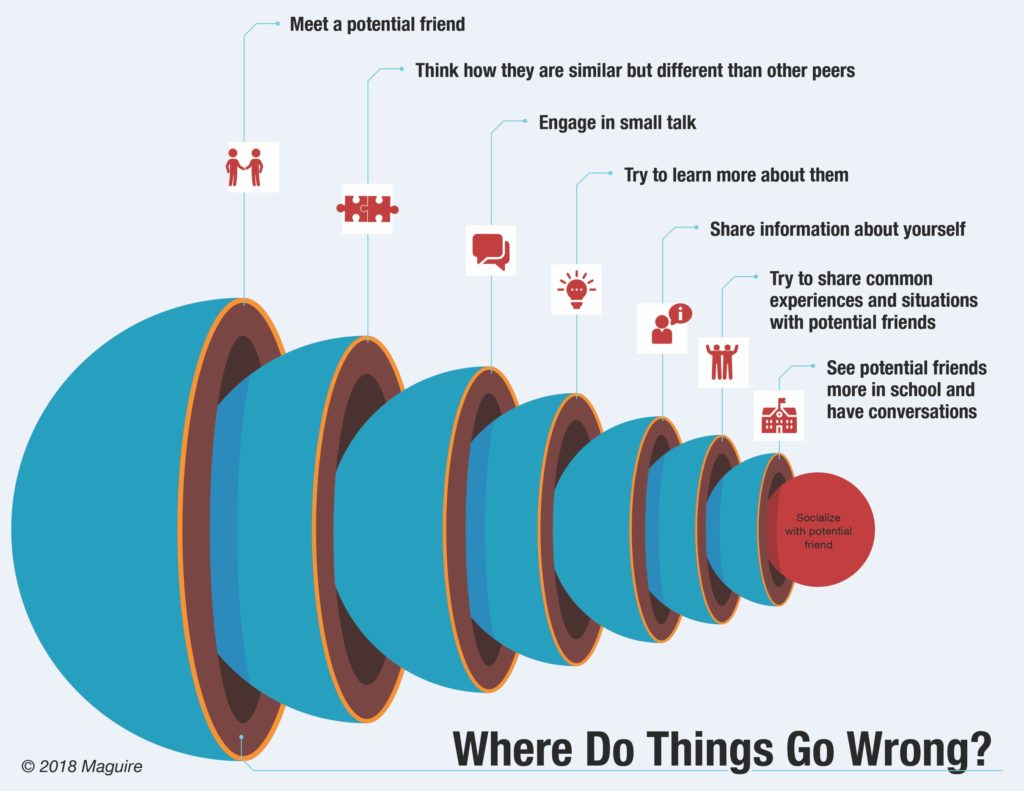Learning How to Become a Social Spy So You Can Understand & Make Friends with Anyone
Do you consider yourself an observant person? How good are you at listening, taking note of your surroundings and tailoring your approach appropriately?
Some of you will consider yourselves a great Reader of the Room, while most will think they have a thing or two to learn. According to resent research, only 10% of us have the attributes of self-awareness, which includes predicting how someone will react in a given situation, their perspective on a topic, reading their body language, and reacting to that information.
The more you watch people’s actions with intention, the better we can understand them.
My coaching technique, “Social Spy” helps us build self-awareness, tune into details and figure out the norms in new social situations.
I’m seeing many introverts engaging more socially now due to our current, virtual world. Yay! Zoom is great for shy people as it can be less intimidating than walking up to someone in person. Now is the perfect time to work on strategies to build your (or your child’s) social and emotional skills as we re-enter in-person interactions.

What is Social Spy?
Social Spy is people watching with a mission. In this activity, we set out with the intention to observe people’s verbal and non-verbal body language in order to figure out their emotions, interests, perspective, mood, etc.
How Does Social Spy Work?
The first step is to understand where you need help, and then to set achievable goals. What about interacting with others, online and in-person, causes you to avoid or delay connecting? Is it to determine what others like or how they share information? Is it to observe how the group interacts and whether it is a good fit for you? Understanding where you need help is critical to setting up a plan.
Next, find a place where you can quietly observe other people. Try a variety of places, such as community organization, grocery store, or a sidewalk cafe. For children that are easily overwhelmed, you can do the same while watching a show.
Without looking conspicuous, watch for the chance to see how people act when you are not talking to them. Remember, communicating is with words, eyes and non-verbal communication in order to read/observe the whole person.
Pick one person to “spy” on and look for 3 things that you can identify about that person. What is the most important thing that you want to know about them? If you have a child that won’t pay attention and notice other children, model for the child how to make observations and inferences about other people. Then ask the child to do the same.
Describe What You See
Describe someone you see who looks:
- Happy -What are they doing? What does their face and body language look like?
- Bored – What are they doing? What does their face and body language look like?
- Alone – What do you think they are feeling? Why do you think that?
- Friendly – What made you think they were a friendly person?
- Indifferent – What about them made it so you could not tell what they were feeling?
Does Being a “Social Spy” Make You Feel Uncomfortable?
Many feel uncomfortable when they use my social spy technique because they worry others are noticing them. Let me assuage your mind – they are not.
How To Use The Information You Uncover To Make Friends
Use this technique to gauge the culture, make a mental inventory of people and what you KNOW about them, step into their shoes and figure out what hot buttons they have. Think about who in this larger group you might want to build a connection or friendship with. For professionals, think about who you want to build a better relationship with at work.
If you’re the new kid in school, observe the other kids who are interested in the same thing as you. What do they talk about, what clubs or activities do they join? In the workplace you can spy to better understand who you will be presenting to? What do they care about? Will they want the facts and figures, or will they be thinking about the human impact of the project? Does the person you’re presenting to have lots of awards, certificates, and visuals around their desk?
Congrats on your desire to make friendships and connection important to you! Next, practice making small talk. Bridge the gap from “Hi” to a deeper conversation. What invitation can you suggest to reach out to them individually? Step into their shoes – what do they like?
Once you establish a connection, be sure to nurture the relationships by sending a message, calling or talking outside of the committee, school, workplace.

Remember to pick one thing to work on and every time you walk through a real or virtual door, to remember your intention, review the group and identify your role. Any way that you can link observation with a perspective-taking activity – you will reinforce this critical social skill.
Related Reading:
I’m So Embarrassed About Always Saying The Wrong Thing At The Wrong Time
How To Stop Avoiding Eye Contact with People at Work So They Start Paying Attention To You
Learn To Meet New People Confidently!
Even if spending time with people drains you and you don’t feel like putting in the effort to attend an event, it’s important to find social skills activities that help recharge your energy and make you feel connected. For more suggestions on adult social skills development, check out our new product: Meet People with Confidence



